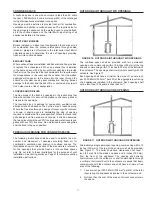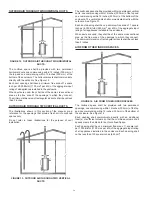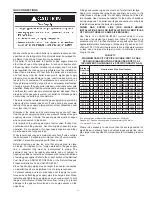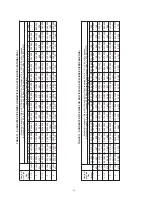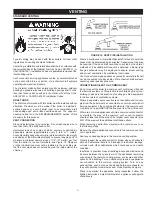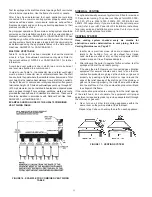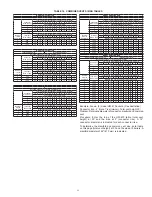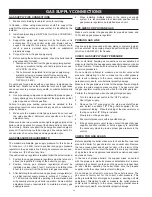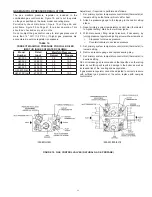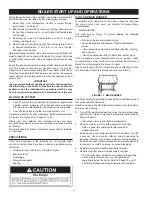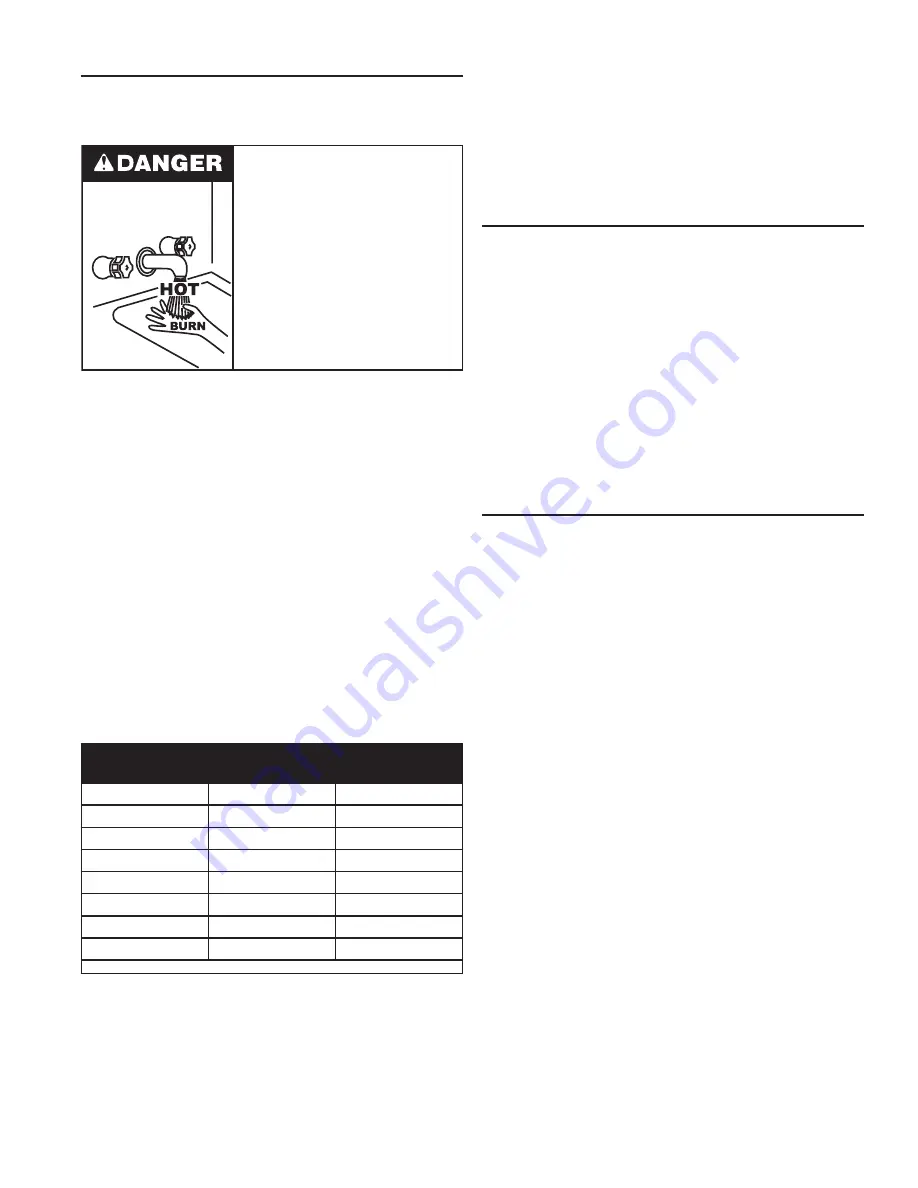
11
USE ANTI-SCALD VALVE(S) in the hot water system to reduce
the risks of scalds at points of use such as lavatories, sinks and
bathing facilities.
A change in water temperature in the storage tank lower than the
Tank Temperature Control setting will cause the sensor to close
its contacts and consequently energize the boiler.
If the Tank Temperature Control is out of calibration, replace it
with a new one; do not attempt to fix this control.
THERMOMETERS
Thermometers should be obtained and field installed as
shown in the installation diagrams.
Thermometers are installed in the system as a means of
detecting a possible liming condition in the boiler. An
increase of 5°F (3°C) over the normal temperature rise
through the boiler is an indication that lime is present. The
term "temperature" designates the difference between the
boiler inlet and outlet water temperature.
An increase of 5°F (3°C) above the recorded temperature
rise may signify a liming condition in the coils or heat
exchanger. Refer to Cleaning and Flushing Instructions on
Page 40 for deliming instructions.
Record temperature rise at initial start-up for future
reference.
DRAIN VALVE (NOT SUPPLIED)
A drain valve must be obtained and installed on each boiler
and tank for draining purposes.
TANK TEMPERATURE CONTROL
The water temperature in the storage tank is controlled by the
Tank Temperature Control. The sensing element is mounted
inside the hot water storage tank.
The tank temperature control is adjustable from 100°F (37.7°C)
to 220°F (104.4°C). It is recommended that lower water
temperatures be used to avoid the risk of scalding. It is further
recommended, in all cases, that the water temperature be set
for the lowest temperature which satisfies the user’s hot water
needs. This will also provide the most energy efficient operation
of the boiler and minimize scale formation.
The boiler should be located in an area where the general public
does not have access to set temperatures. Setting the water
temperature at 120°F (49°C) will reduce the risk of scalds.
Some people are more likely to be permanently injured by
hot water than others. These include the elderly, children, the
infirm and the physically/mentally disabled. Table 5 shows the
approximate time-to-burn relationship for normal adult skin. If
anyone using hot water provided by the boiler being installed fits
into one of these groups or if there is a local code or state law
requiring a certain water temperature at the point of use, then
special precautions must be taken. Contact a qualified service
technician or qualified agency.
Water Temperature
°F (°C)
Time for 1st Degree Burn
(Less Severe Burns)
Time for Permanent Burns
2nd & 3rd Degree
(Most Severe Burns)
110 (43)
(normal shower temp.)
116 (47)
(pain threshold)
116 (47)
35 minutes
45 minutes
122 (50)
1 minute
5 minutes
131 (55)
5 seconds
25 seconds
140 (60)
2 seconds
5 seconds
149 (65)
1 second
2 seconds
154 (68)
instantaneous
1 second
(U.S. Government Memorandum, C.P.S.C., Peter L. Armstrong, Sept. 15, 1978)
Water temperature over 125°F (52°C)
can cause severe burns instantly
resulting in severe injury or death.
Children, the elderly and the
physically or mentally disabled are at
highest risk for scald injury.
Feel water before bathing or
showering.
Temperature limiting devices such as
mixing valves must be installed
when required by codes and to
ensure safe temperatures at fixtures.
TABLE 5. TEMPERATURE AND TIME TO PRODUCE BURNS

















